Traditional Ecuadorian food is diverse and underrated. Each of this small country's geographic zones, the Pacific coastal regions, the Andes Mountains, and the Amazon, features a variety of local delicacies.
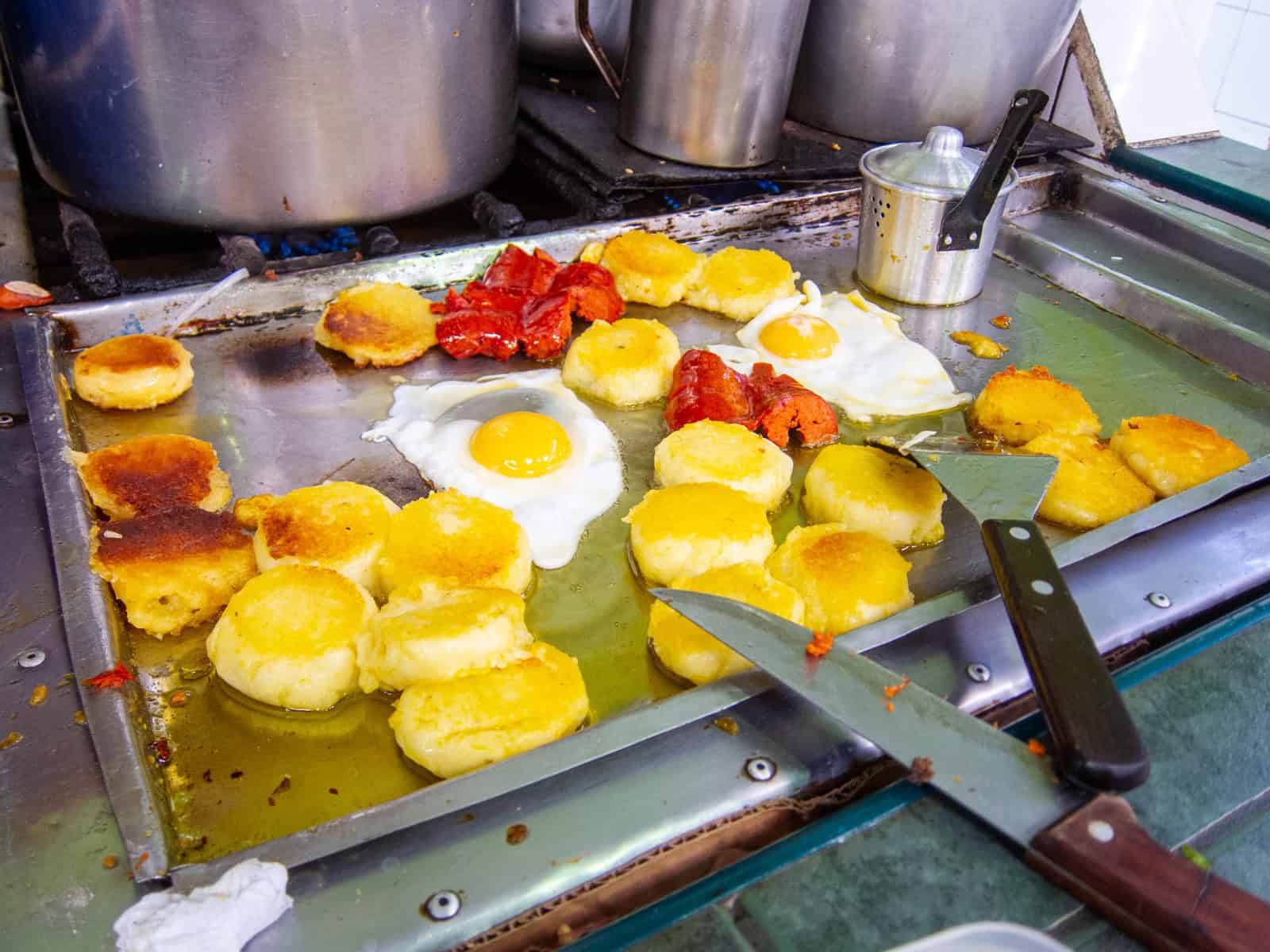
Like Colombia to the east, soups are a specialty across the country, and like Peru to the south, ceviche is a typical dish on the coast.
Leave your preconceived notions about Ecuadorian cuisine at the border, and step outside your comfort zone while traveling through Ecuador.
Table of Contents
Ecuadorian Food – Typical Dishes
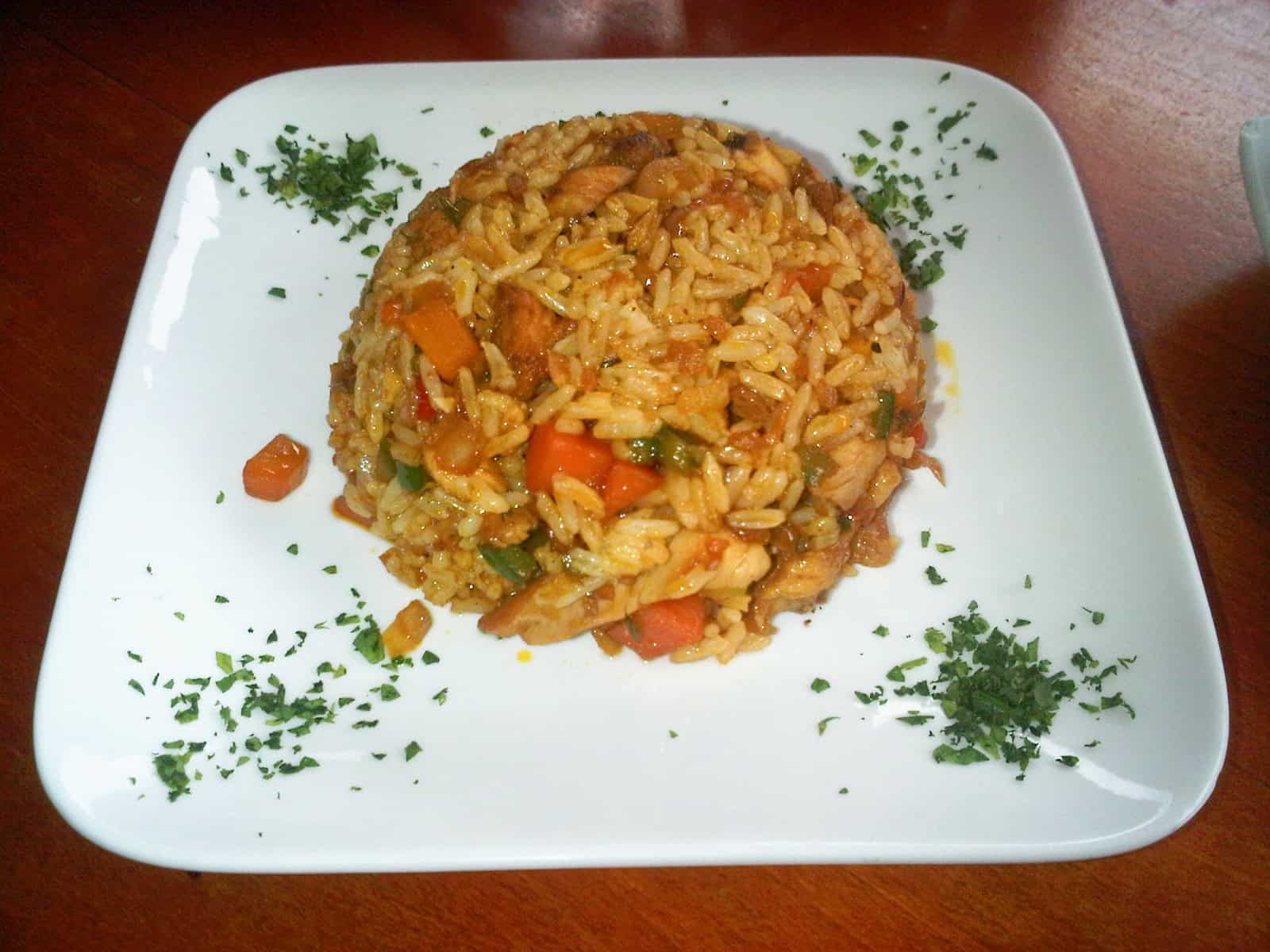
Arroz con Pollo (or Camarones)
Arroz con Pollo (rice with chicken) and Arroz con Camarones (rice with shrimp) are traditional dishes found in many Latin American countries.
There's nothing special about the versions you'll get in Ecuador. Both are popular dishes you can always fall back on if nothing else on the menu catches your eye.
Where to Eat It: Anywhere
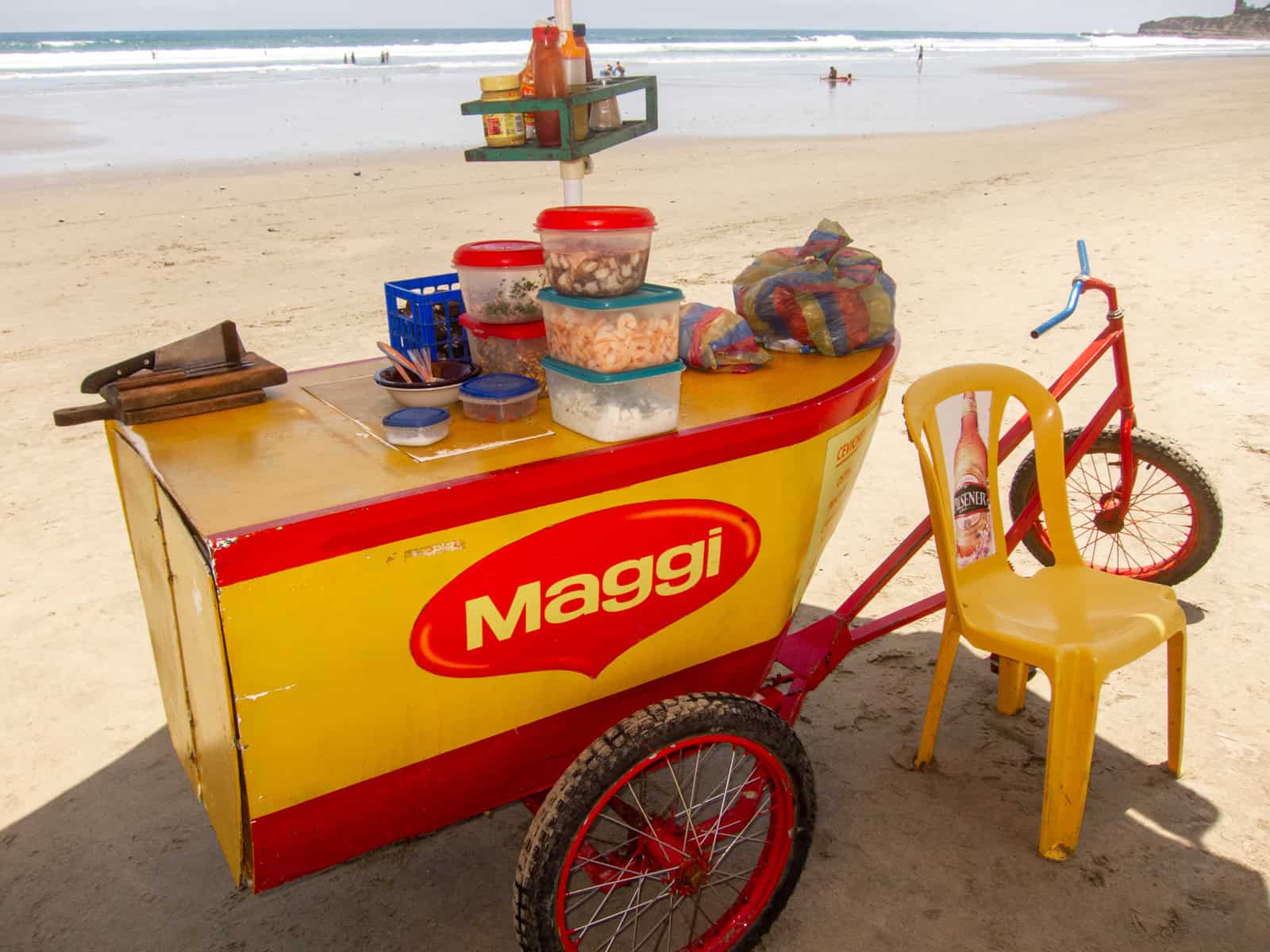
Ceviche
Ecuadorian ceviche is a mix of raw seafood and shellfish “cooked” in citric juices, especially lime juice.
Typical ingredients of this popular food on the Ecuadorian coast include raw fish, shrimp, crab, clams, squid (calamari), and onions. The ceviche is often served with fried green plantains (patacones or tostones).
Where to Eat It: Ceviche is often enjoyed at the beach. The surf town of Montanita is filled with ceviche carts where you can order a custom-made bowl for as little as $5.
For higher quality ceviche, visit one of the many restaurants in Guayaquil.
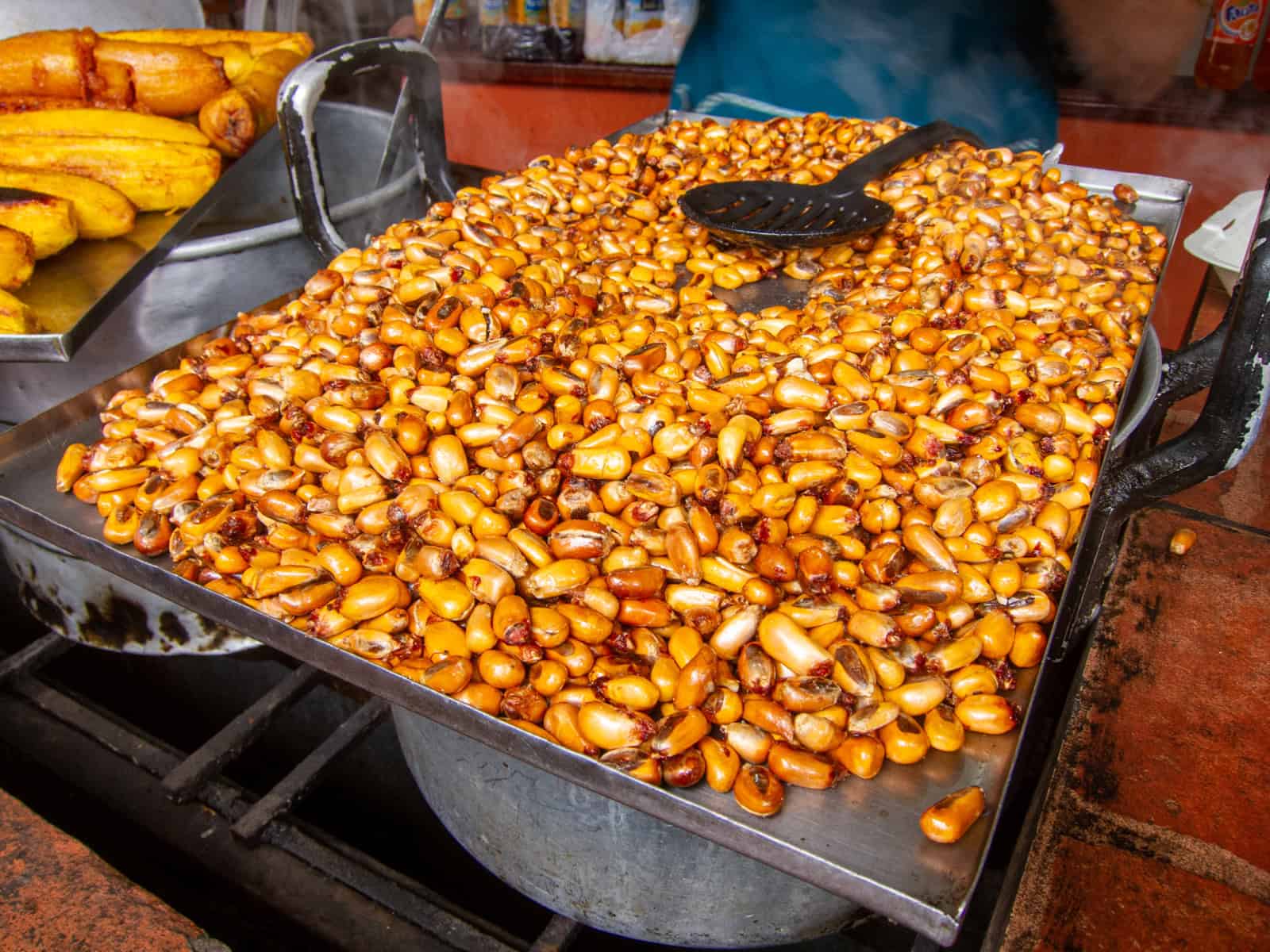
Choclo
Dry roasted Andean corn is a cheap and popular street food. I found it too dry and crunchy to enjoy, but I guess that's what Ecuadorians like about it.
Where to Eat It: Street vendors
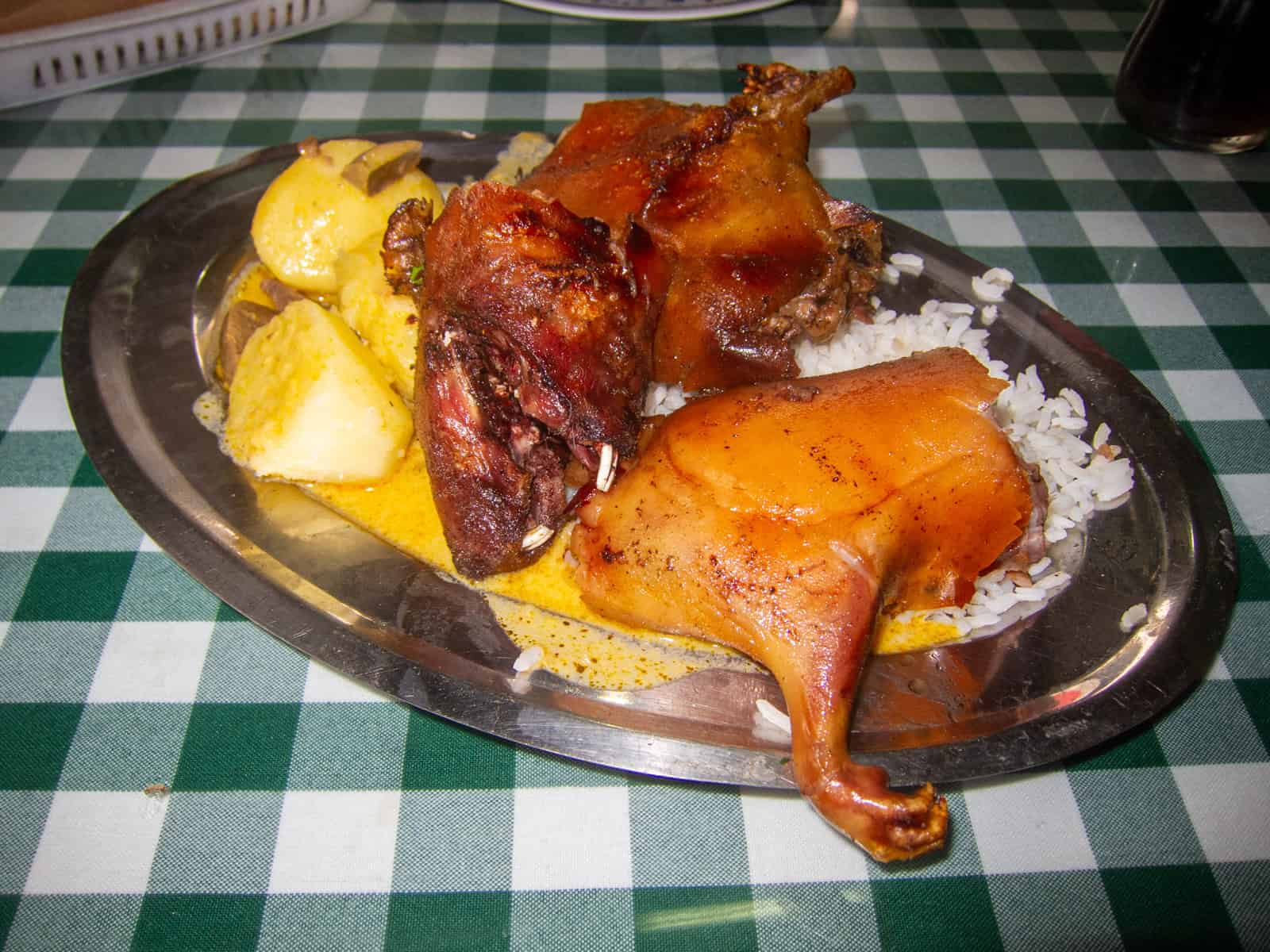
Cuy (Guinea Pig)
Thanks to TV, and word of mouth, cuy asado (roast guinea pig) is perhaps the best-known Ecuadorian food.
Sampling this small rodent (and pet in Western countries) is a rite of passage for most backpackers, if not all travelers. Due to the cost, Ecuadorians often eat cuy to celebrate special occasions.
The whole cuy costs about $20. However, this is typically too much for a single person, especially if you're only interested in sampling it.
The best way to go is to order a single piece or quarter cuy to see if you like it.
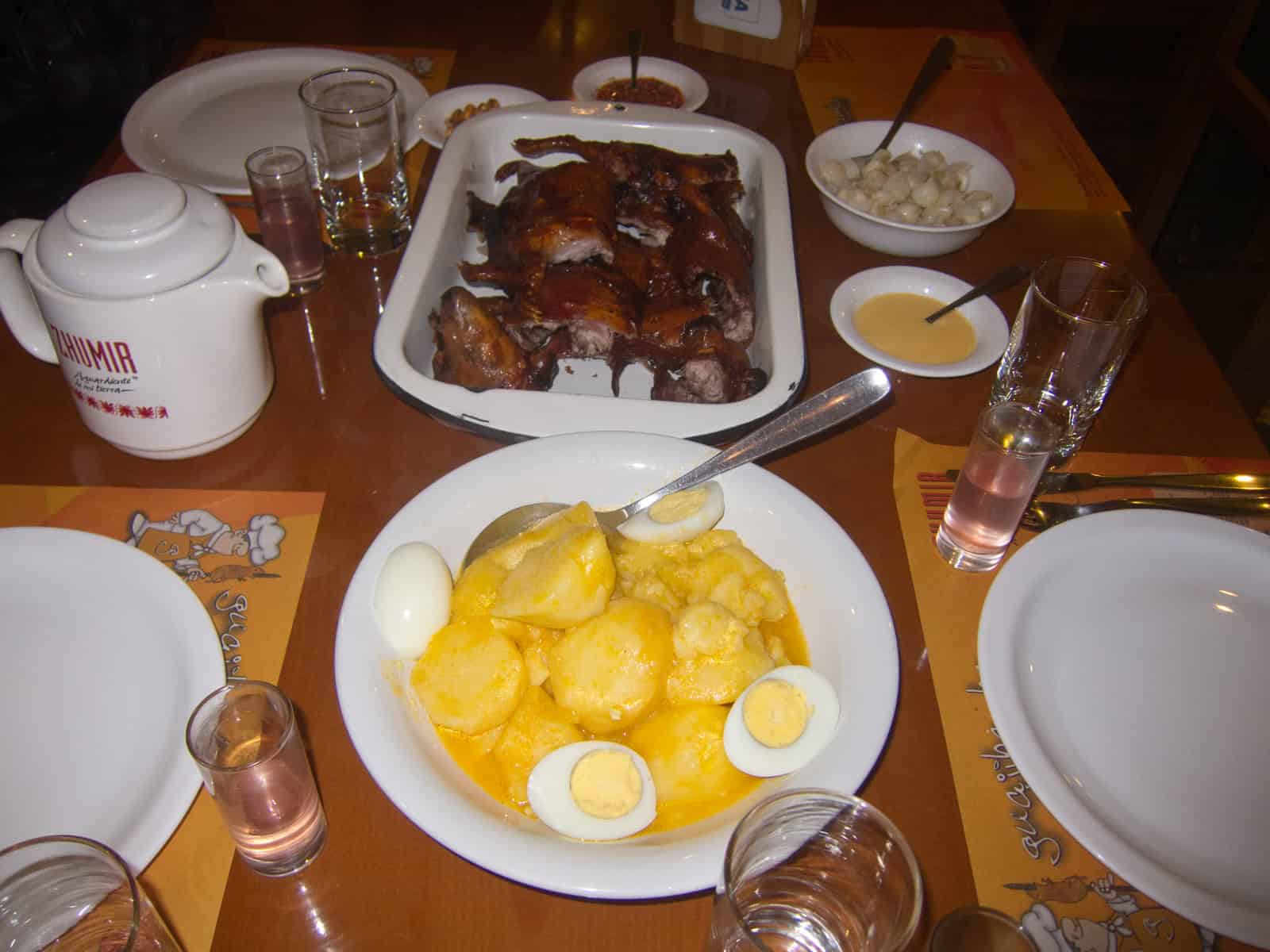
Cuy is very greasy, and there's not a lot of meat; it's mostly skin, bones, and cartilage. Expect to use your hands and get messy.
Locals love to eat everything, with the tiny and crunchy paws and creamy brains being especially popular.
Where to Eat It: Cuenca is the best-known city in Ecuador for cuy. To sample this traditional dish in an excellent restaurant environment, head to Guajibamba Cuyes (Luis Cordero 12-32 Y Gaspar Sangurima).
Alternatively, several restaurants next to the Market on the main street in Banos openly cook cuy.
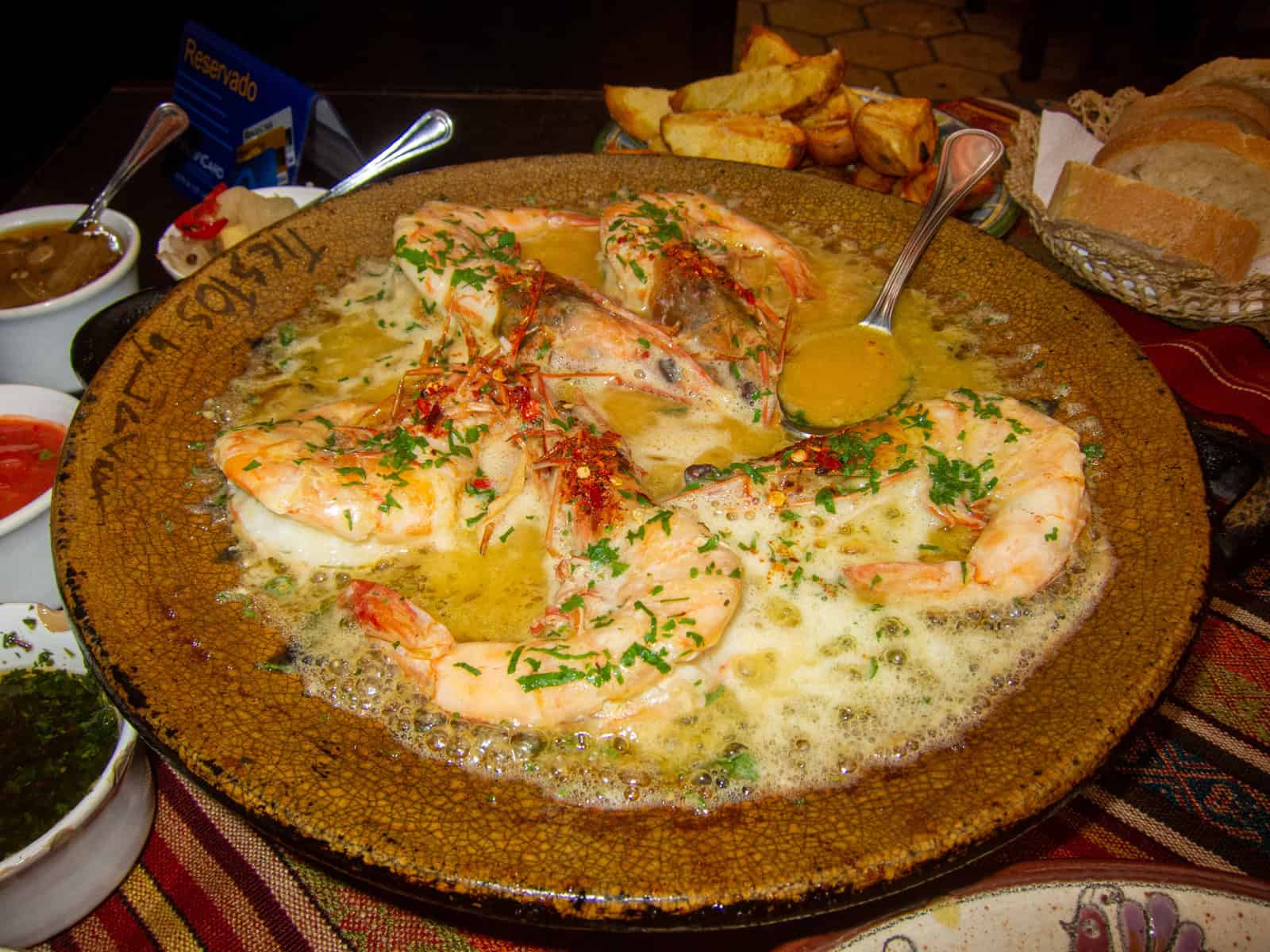
Langostinos
Langostinos are one of the many fresh and delicious seafood options on offer in Ecuador.
Because the country is so small, they can easily be sourced from the coast, so don't be afraid to order them if you're in the Sierra mountains.
I had some of the best langostinos of my life at Tiesto's Restaurant.
Where to Eat It: Tiesto's Restaurant in Cuenca.
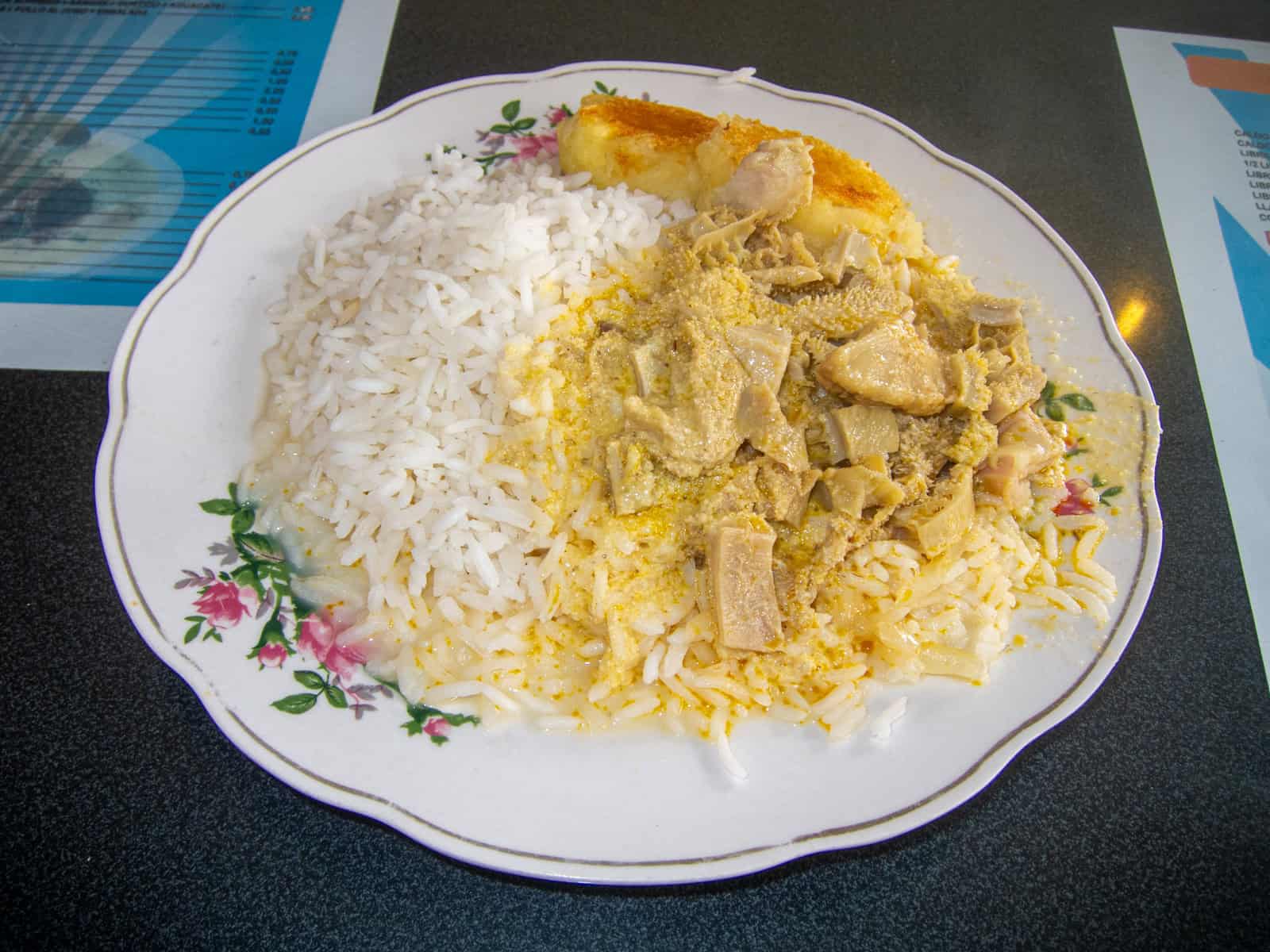
Librillo
Librillo is the cooked and chopped stomach lining of a cow. It can be prepared and served in many ways, usually with white rice, and it's popular in the mountain regions of Ecuador.
If you're a fan of tripe or are feeling adventurous, order librillo.
Where to Eat It: Banos
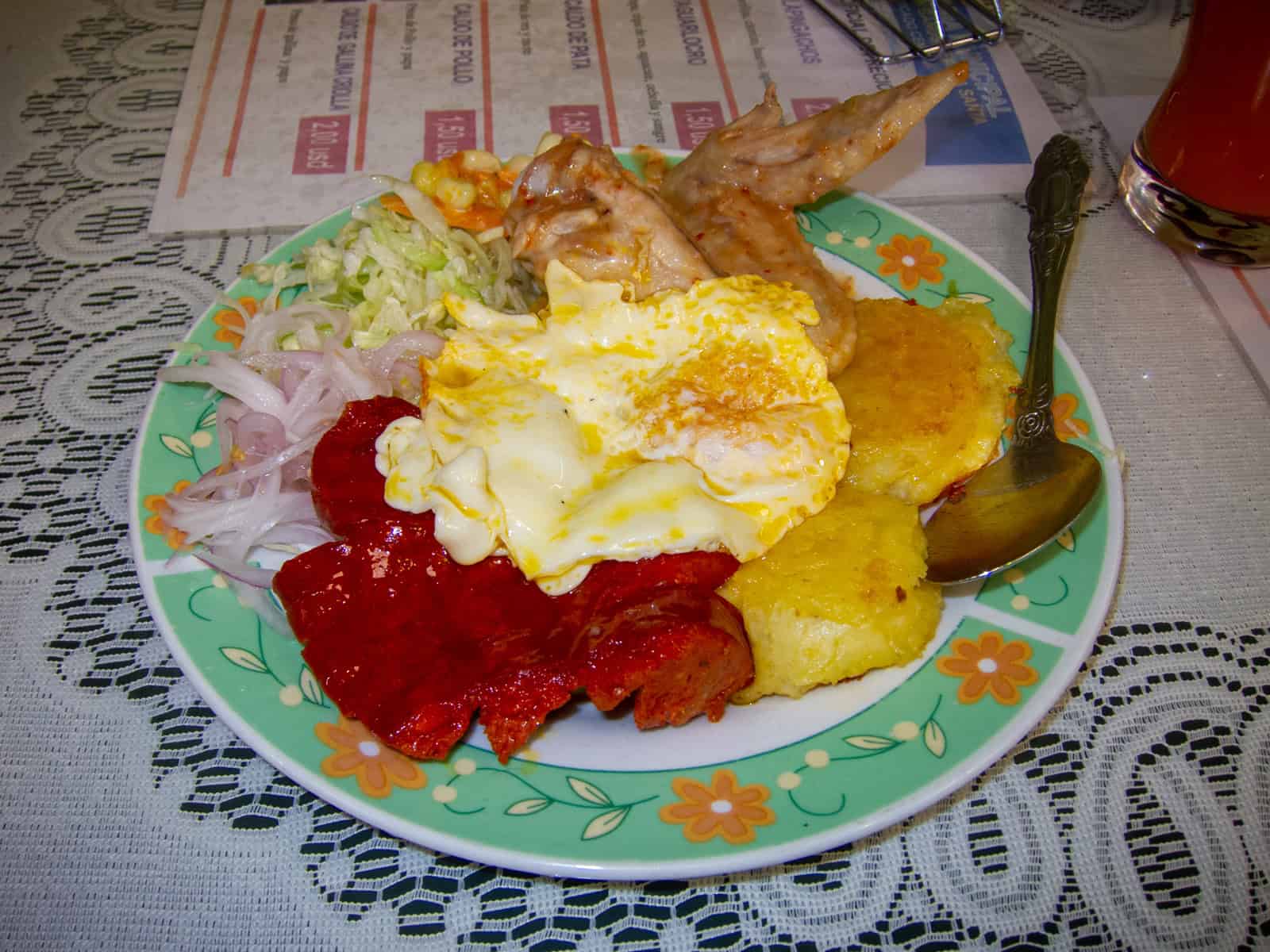
Llapingachos
Llapingachos are one of the best-known and most beloved Ecuadorian dishes. They are potato patties made with cheese and cooked on a griddle until golden brown.
Llapingachos are often served as a side, along with pork, such as chorizo, a fried egg, avocado, green plantains, and salad. Add hot sauce to spice it up.
This is one of my favorite traditional dishes from Ecuador.
Where to Eat It: The (lunch) Market in Banos for $2.
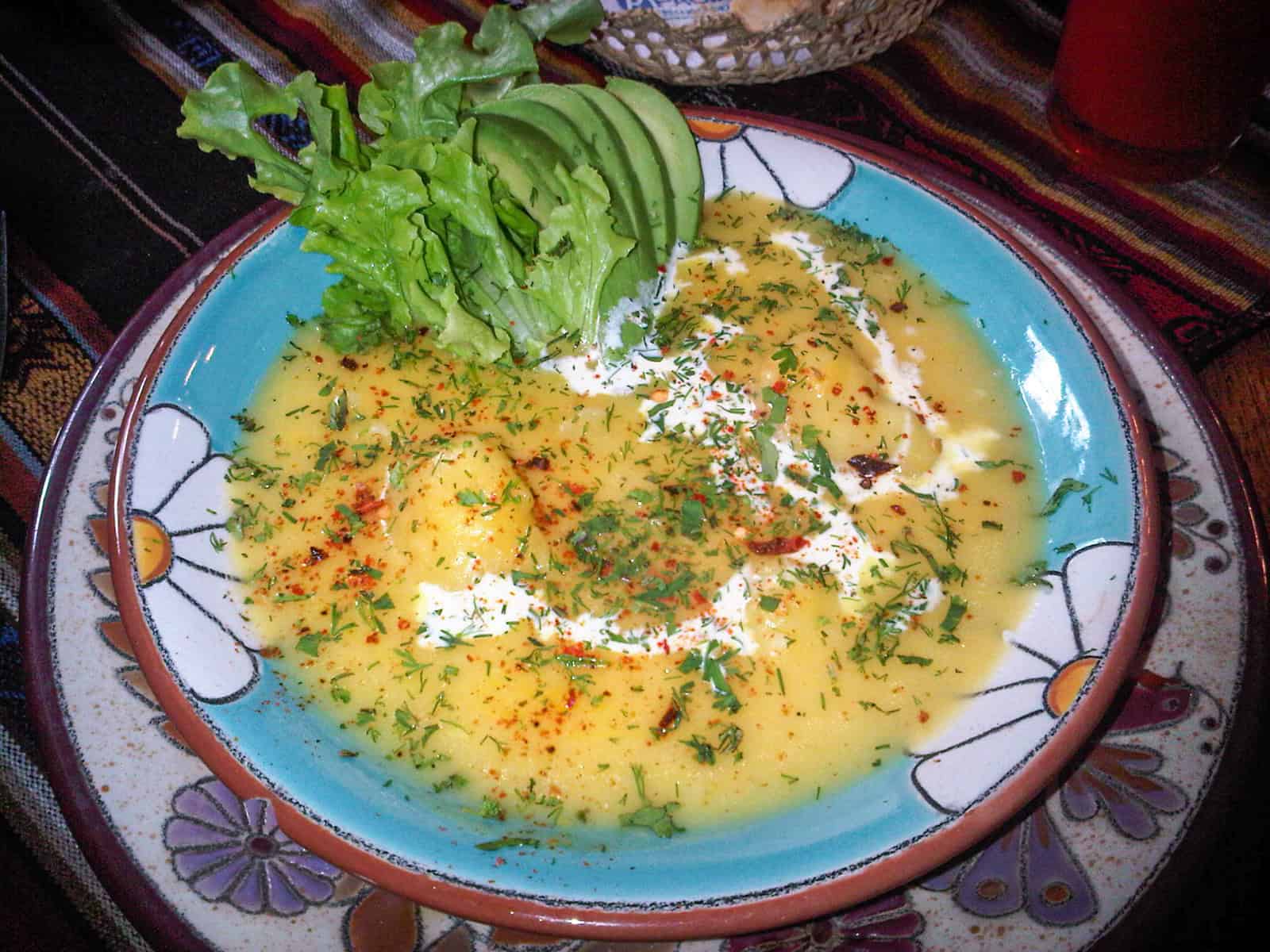
Locro Soup
Locro Soup (Locro de Papa) is a hearty, potato-based Ecuadorian soup made with cheese and avocado.
This soup is popular in the Sierra and the perfect Ecuadorian food to warm you up on a chilly night. This was another of my favorite dishes.
Where to Eat It: Tiesto's, an Ecuadorian restaurant in Cuenca.
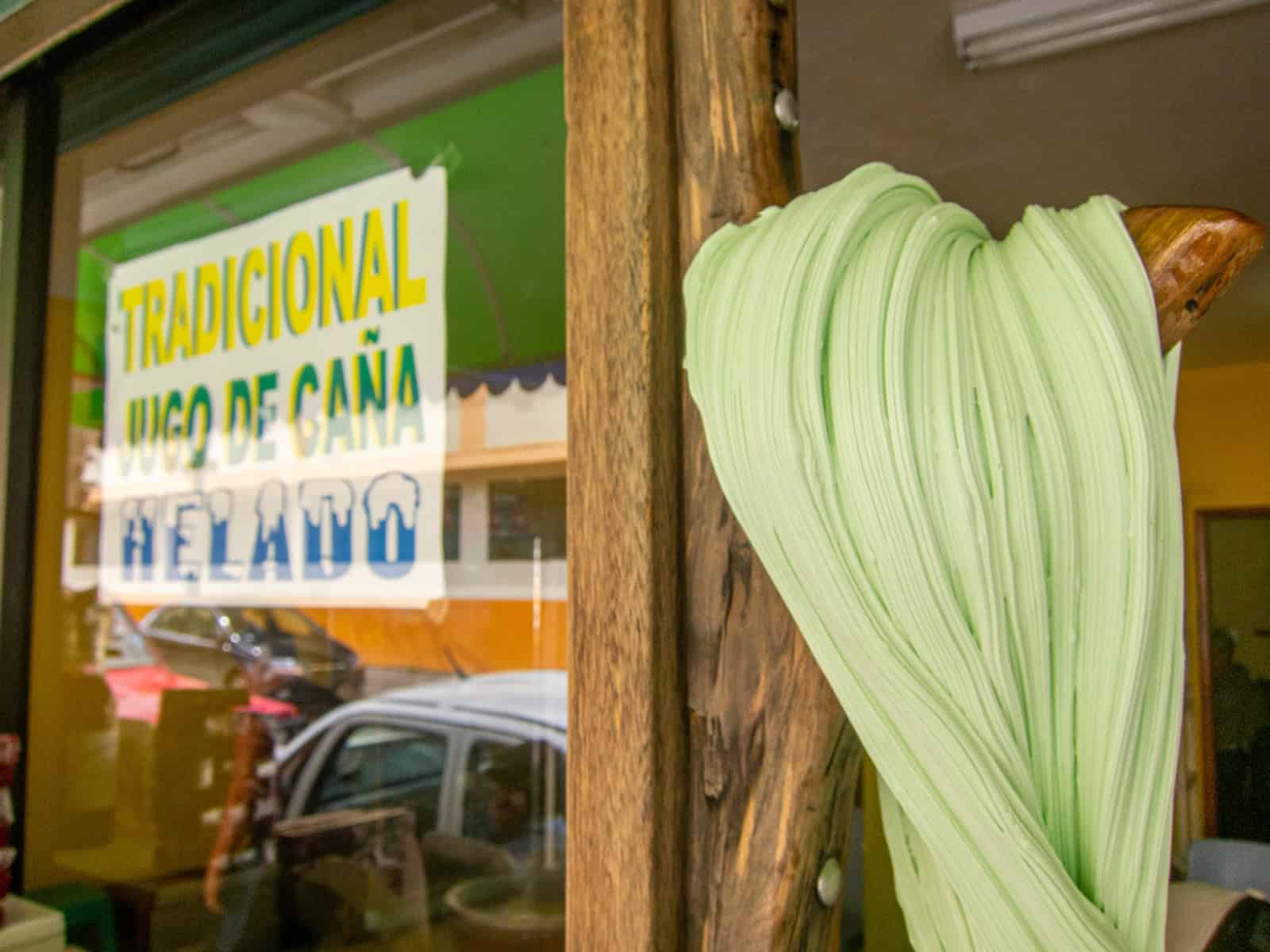
Melcocha
Wander the streets of Banos long enough, and you're sure to pass by the candy shops where Melcocheros are busy preparing the colorful local taffy called Melcocha.
The stretching and kneading process occurs as the taffy is wrapped around wooden pegs inside the door jambs of the shops.
The candy is sweet, so your taste buds will be happy but dangerous. I wouldn't recommend chewing on it if you've got loose teeth or have done a lot of dental work.
Where to Eat It: Any one of the many candy shops in Banos.
Pan de Yuca
Pan de Yuca is a soft bread made with flour from the yuca root, cheese, butter, and eggs.
It's common throughout Latin America and often goes by different names depending on the country. Served warm, it makes an excellent appetizer or snack.
Where to Eat It: Everywhere
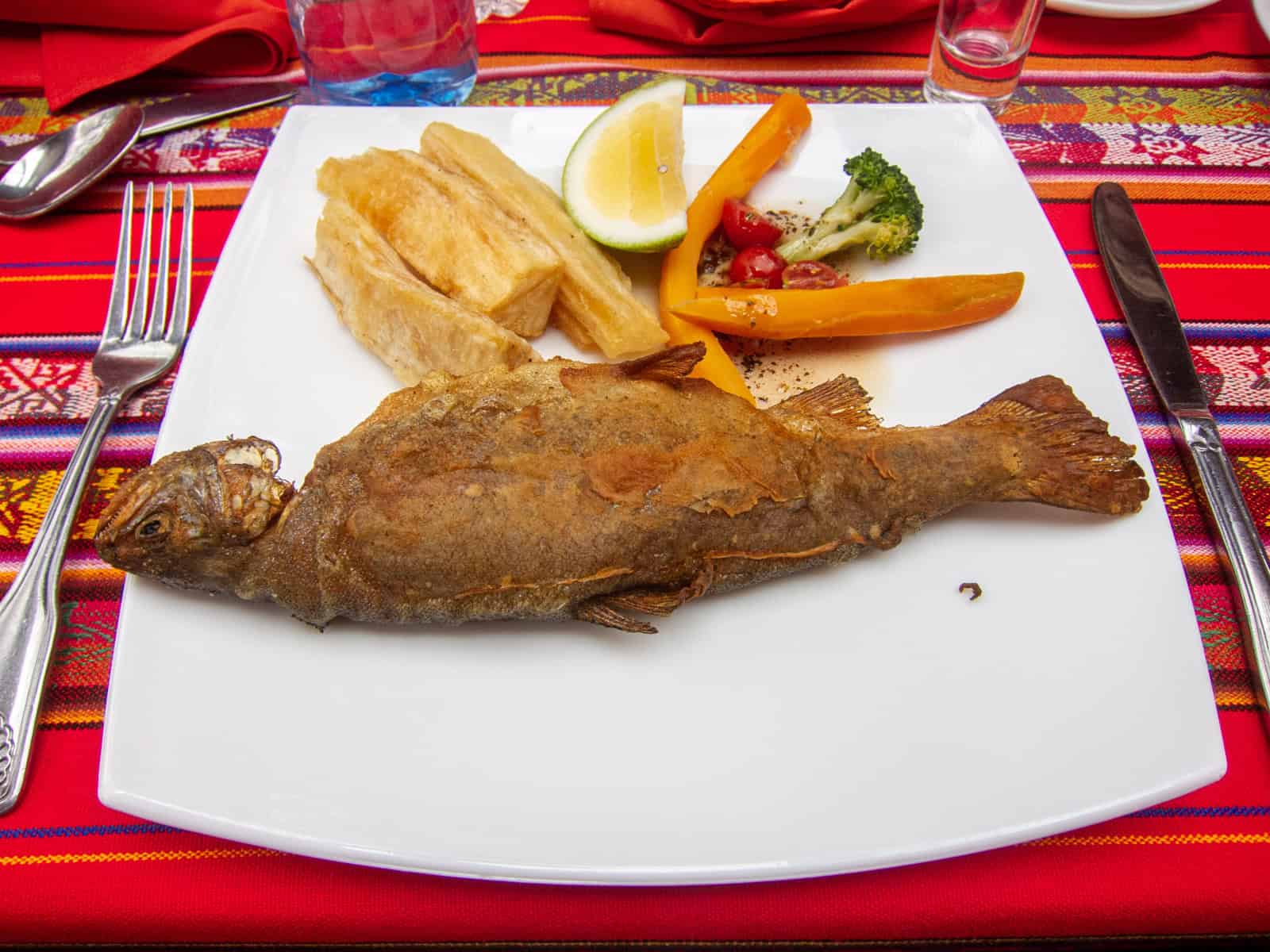
Trucha
Fried trout (trucha frite) is a traditional Ecuadorian food served throughout the Sierra and is often accompanied by potatoes, French fries, or yuca and vegetables.
Where to Eat It: Restaurants in the Sierra mountains (ex: Banos, Cuenca).
Traditional Drinks in Ecuador
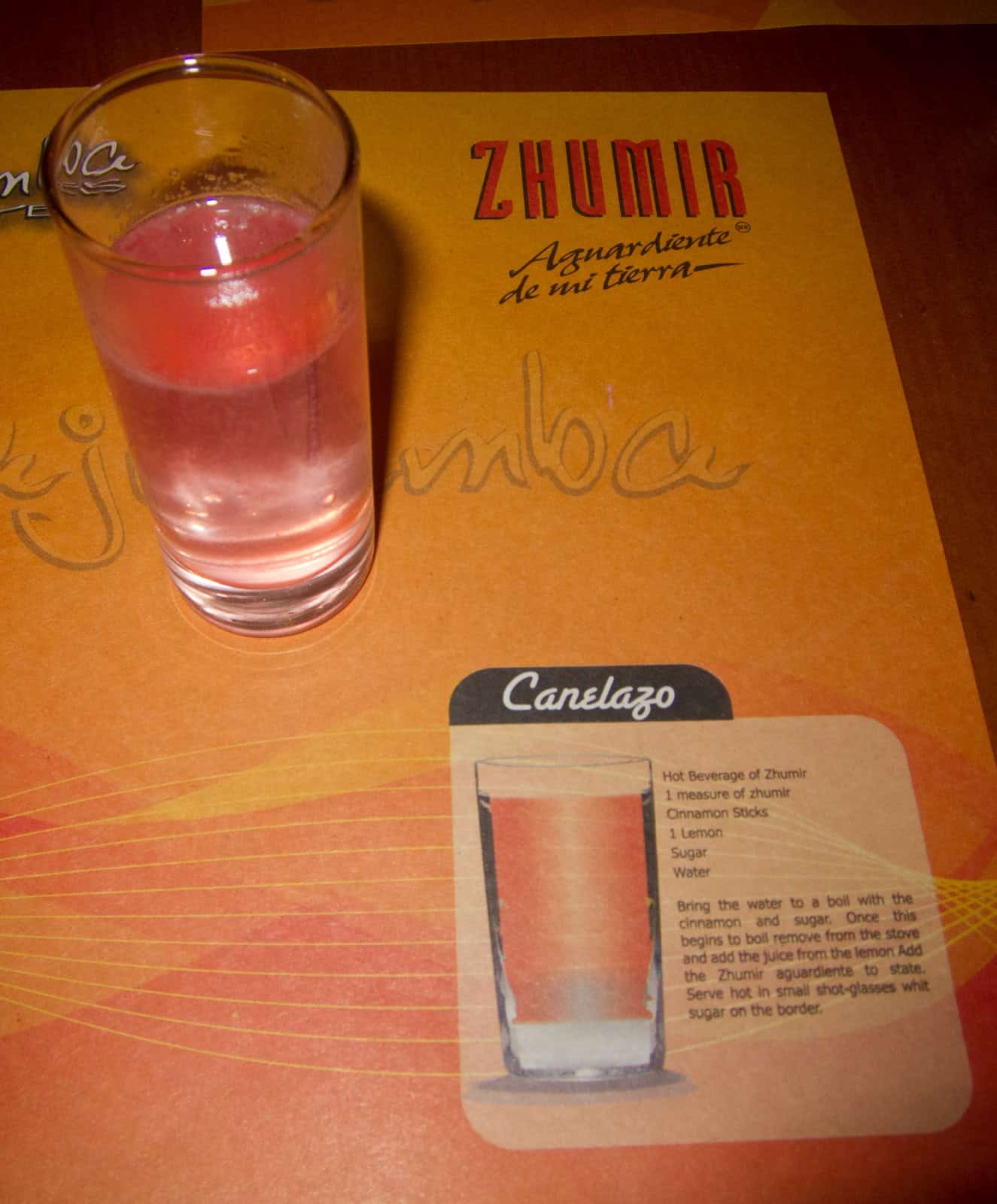
Canelazo
Canelazo is an alcoholic beverage made of Aguardiente (a clear, anise-flavored liquor), cinnamon, lemon, sugar, and water.
Popular in the Sierra, it's served warm and can often be ordered by the pitcher.
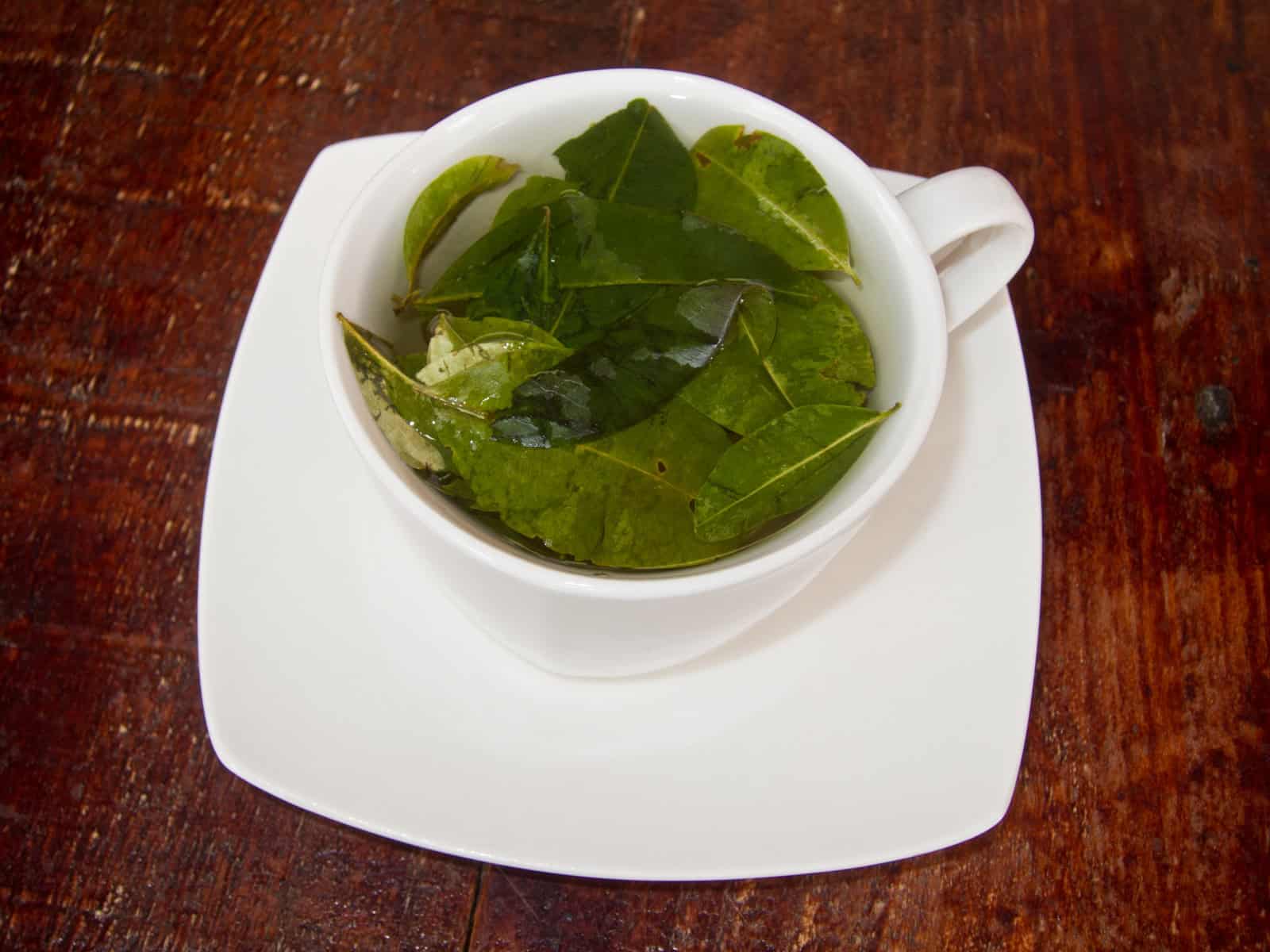
Coca Tea
Coca tea is a traditional tea of the Andean region in South America.
It's made using the dried leaves of the coca plant and has a mild stimulant effect, similar to green tea or coffee.
It's believed to be helpful at high altitudes and is therefore commonly consumed in the mountains. You may also see it in Quito.
The tea is simple to make — add a couple of coca leaves to a cup of hot water and let them soak for a few minutes.
Bagged tea is often available in hotels and supermarkets.
Coca tea is consumed in Ecuador, Colombia, Peru, Bolivia, and Argentina. It's illegal in the United States unless the coca alkaloids have been removed.
Where to Drink It: Before you go downhill mountain biking on Cotopaxi Volcano.
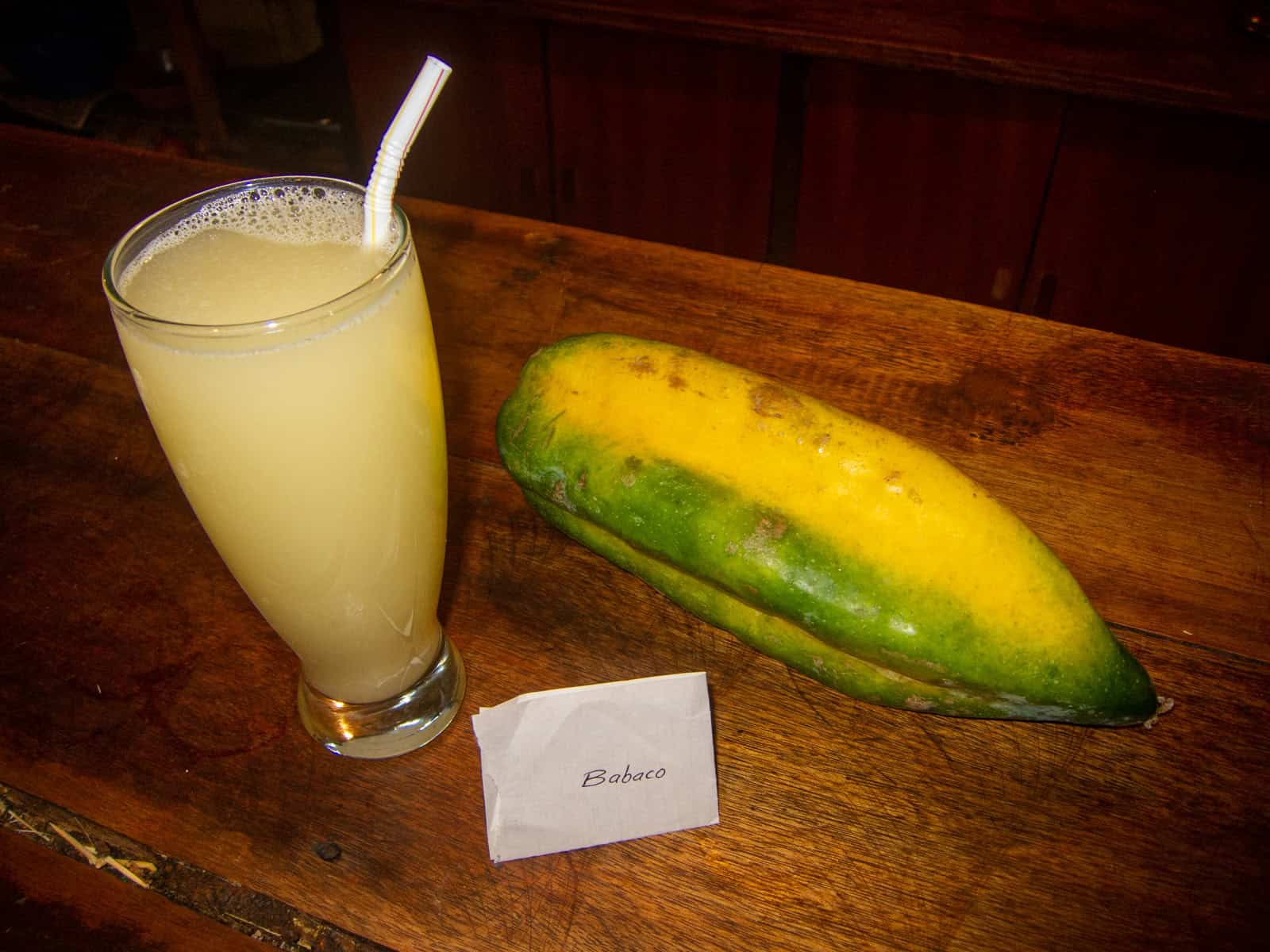
Fresh Fruit Juices
Ecuadorian food may not feature a lot of fresh vegetables; however, like in neighboring Colombia, fruits are a strength. Especially bananas.
Most fruits are also available as fresh fruit juices too. They're inexpensively priced, so try them all if you can.
Popular options include:
- Orange juice (naranja)
- Raspberry juice (mora)
- Banana juice
- Passion fruit juice (maracuya)
- Soursop juice (guanabana)
***
We hope this guide to Ecuadorian food has left you inspired (and hungry).
If you'd like to visit Ecuador but aren't sure about traveling on your own, consider a small-group tour from G Adventures:
Ecuador Encompassed is a 17-day trip that includes stops in Quito, Banos, Tena (the Amazon), Otavalo, Cotopaxi, Cuenca, and Montanita.
Ecuador Mainland & The Galapagos Islands is a 14-day trip by land and sea. The tour includes Quito, Banos, Tena (the Amazon), and five days in the Galapagos Islands.
_____
Do you like to cook at home? Kitchenistic offers a variety of cooking-related guides. Be sure to check it out.
Last Updated on April 17, 2023 by Dave Lee
Dave is the Founder and Editor in Chief of Go Backpacking and Feastio. He's been to 66 countries and lived in Colombia and Peru. Read the full story of how he became a travel blogger.

Frank Hatton
Sunday 13th of May 2018
I was just at a party with the equadoriian people that live next door to me their little boy got baptized and they sat around a fire pit and roasted guinea pigs in a spit over the charcoales in the fire pit. The guinea pig was very tasty.
Cristhian
Friday 27th of April 2018
I'm Ecuadorian and so many dishes are missing, I will say the most popular for example: Encebollado. Guatita. Empanadas. Sango. Viche de mariscos. Fanesca. Tonga. Corviches. Bollos. Ayacas. Arroz con menestra y carne. And believe me, I'm ecuadorian from the coast and we think eating cuy is so disgusting, so no all the ecuadorians like to eat an animal that looks like a rat.
Dave
Friday 27th of April 2018
Thank you for sharing these dishes. At some point I'd like to rewrite this article to go into more depth on each.
Cindy
Wednesday 7th of March 2018
As a teenager I had a friend from ecuador.and remembering eating over there alot. There was one particular meal I loved, don't know the name of it but it had meat and carrots,peas and I think corn. It was juicy and I remember it had alot of cumin. We served it over white rice. O my gosh! It was so delicious! Does any one know what this dish is? And the real recipe?
Maria
Thursday 29th of March 2018
The name is Estofado de carne (Stew) coastal dish
Nnema
Tuesday 11th of July 2017
Hi, i am working on a paper on Ecuadorain cuisine and lifestyle, regarding local food and what are the popular eating styles. i will appreciate any insight.
Nnema M.C.
Fred
Tuesday 13th of June 2017
Great Information. Looking forward to moving down there! Thanks!